Galapagos Species Database
The Galapagos Species Database shares the information about the species from our Natural History Collections.
Chelonoidis abingdonii
Lonesome George, Solitario Jorge, Tortuga Gigante de Pinta, Pinta Galapagos Tortoise
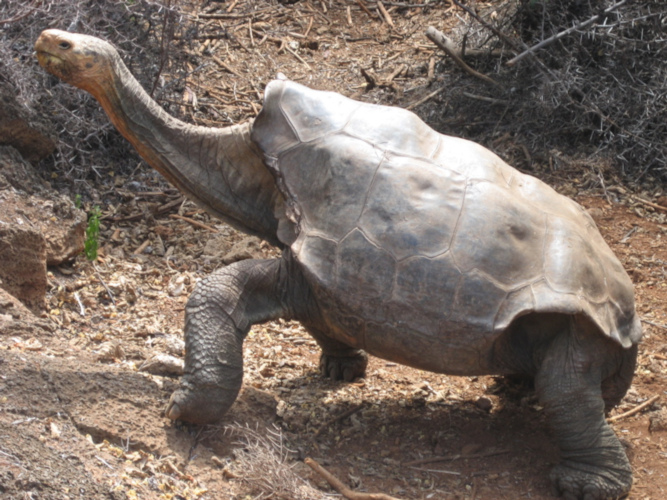
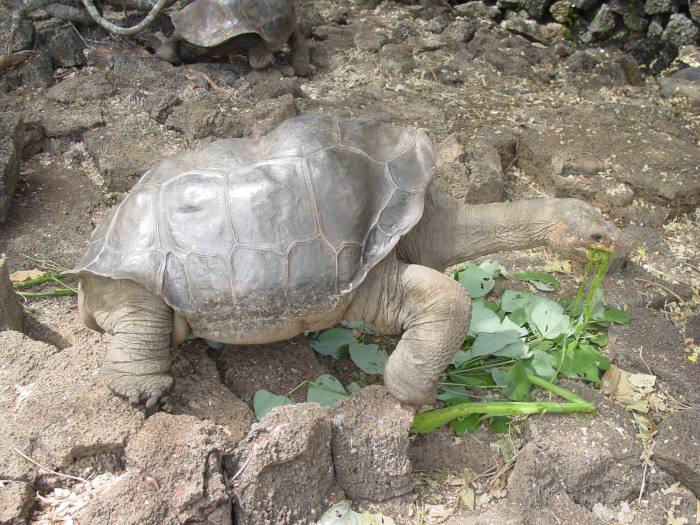
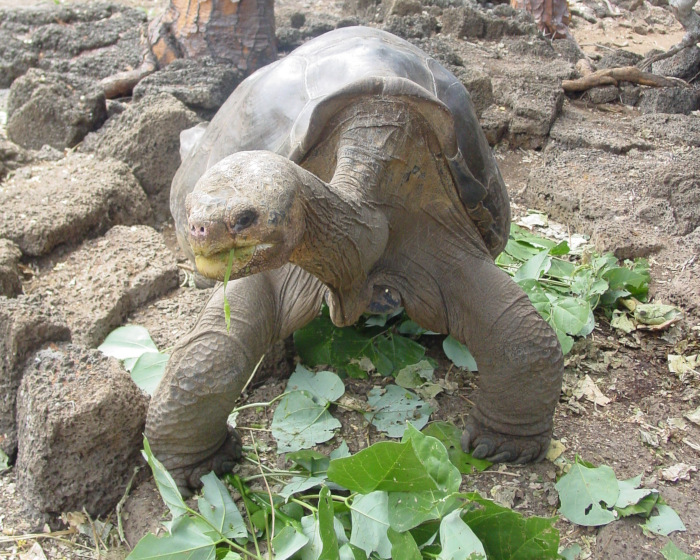
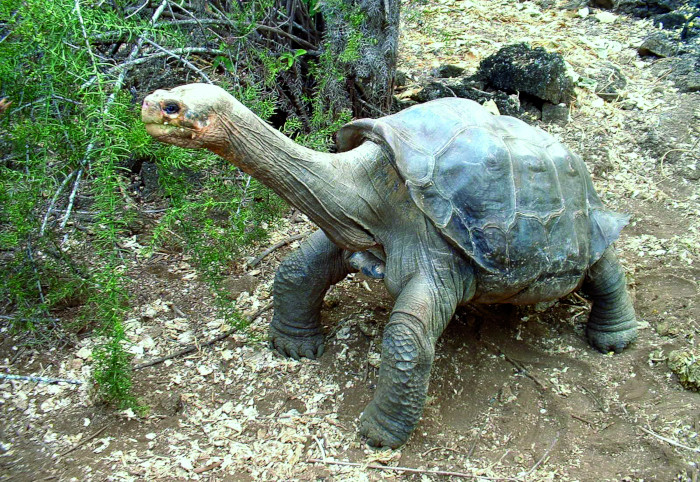

June 24th, 2012, marks the death of the last Pinta Giant Tortoise, Lonesome Goerge, and thus the final extinction of this last survivor of the species Chelonoidis abingdoni (Günther, 1877). Josehp Vagvolgyi discovered Lonesome George on December 1st, 1971, during his field work on terrestrial snails on the Island of Pinta. In the hope to prevent his extinction in the wild, Lonesome George was brought to the National Park Breeding Center in Port Ayora, on the island of Santa Cruz, where he was kept from 1973 to 2012. As part of the reproduction program in the tortoise breeding center Lonesome George first shared his corral with two females from Volcano Wolf (Isabela Island), without successful results. In 2011 the two females of Española Island replaced the Isabela Tortoises, because their genetic code was deemed more similar. Unfortunately none of these captive breeding efforts were ever successful. At the Galapagos National Park Breeding Center Fausto Llenera was the keeper of Lonesome George. Fausto’s dedication to Lonesome George is legend, without his care this last individual of the Pinta Giant Tortoises would likely not have survived that long. Unfortunately, although advised by a network of international and local CDF scientifics and technical personnel of the GNPS all attempts to save the species have now failed.
Domain
Eukaryota
Kingdom
Animalia
Phylum
Chordata
Class
Reptilia
Order
Testudines
Family
Testunidae
Genus
Chelonoidis
Species
abingdonii
Taxon category: Accepted
Syn.: Geochelone abingdonii (Günther, 1877), Testudo abingdoniii Günther, 1877, Chelonoidis nigra abingdonii Günther, 1877, Chelonoidis nigra duncanensis Garman in Pritchard, 1996, Geochelone elephantopus abingdonii Harlan, 1827; Type specimen in BM. Le et al. (2006) demonstrate that the genus Geochelone is polyphyletic and that the Galapagos Giant Tortoises are better treated as the monophyletic genus Chelonoidis. According to Márquez et al. (2004) and Poulakakis et al. (2008) the Geochelone taxa (= Chelonoidis) from Galapagos are genetically distinct and therefore treated as species and not as subspecies of Geochelone (= Chelonoidis) nigra.of Geochelone nigra.
Origin: Endemic
Map of specimen collection localities or observation records for this species in our collections database.
Distribution: Restricted to Pinta Island.
- Jiménez-Uzcátegui, G. Milstead, B., Márquez, C., Zabala, J., Buitrón, P., Llerena, A., et al. (2007) Galapagos vertebrates: endangered status and conservation actions. Galapagos Report 2006–2007. Charles Darwin Foundation, Puerto Ayora, p. 104–110.
- Carrillo, E. Aldás, S., Altamirano, M.A., Ayala-Varela, F., Cisneros-Heredia, D.F., Endara, A., Márquez, C., Morales, M., Nogales-Sornosa, F., Salvador, P., Torres, M.L., Valencia, J., Villamarín-Jurado, F., Yánez-Muñoz, M.H. & Zárate, P. (2005) Lista Roja de los Reptiles del Ecuador. Fundación Novum Milenium, UICN-Sur, UICN-Comité Ecuatoriano, Ministerio de Educación y Cultura, Serie Proyecto PEEPE. Quito, 46 pp.
- IUCN (2010) IUCN Red list of threatened species. Version 2010.1. www.iucnredlist.org
- Hendrickson, J.D. (1966) In Bowman R.I. (ed.) The Galapagos Proceedings of the symposia of the Galápagos international Scientific project. Fundación Charles Darwin No. 13.
- Pritchard, P.C.H. (1996) The Galapagos tortoises: Nomenclatural and survival status. Chelonian research monographs No. 1. Chelonian Research Foundation.
- Van Denburgh, J. (1914) The gigantic land tortoises of the Galápagos archipelago. Proc. Calif. Acad. Sci. 2, part 1: 203–374, pls. 12-124.
- Poulakakis, N. Glaberman, S., Russello, M., Beheregaray, L.B., Ciofi, C., Powell, J.R. & Caccone, A. (2008) Historical DNA analysis reveals living descendants of an extinct species of Galápagos tortoise. Proc. Natl. Acad. Sci. (PNAS) 105(49): 15464-15469.
- Ernst, C.H. Barbour, R.W. (1989) Turtles of the world. Smithsonian Instit. Press. USA 313 pp.
- Heller, E. (1903) Reptiles. In Papers from the Hopkins Stanford Galapagos Expedition 1898-1899. Proceedings of the Washington Academy Sciences 5: 39-98.
- Caccone, A. Powell, J. (2009) Giant Tortoises. Mapping their Genetic Past and Future. In: T. De Roy (ed.): Galápagos. Preserving Darwin´s Legacy. Bateman, Albany, New Zealand, p. 98-105.
- Fritts, T.H. (2001) A brief review of the taxonomic history of Galapagos Tortoise relevant to consideration of the most appropiate generic and specifc name for Giant Tortoises in Galapagos. U.S. Geological survey Report, 7 pp.
- Caccone, A. Gibbs, J.P., Ketmaier, V., Suatoni, E. and Powell, J.R. (1999) Origin and Evolutionary Relationships of Giant Galapagos Tortoises. Proc. Natl. Acad. Sci. United States of America (PNAS) 96(23): 13223-13228.
- Márquez, C. Wiedenfeld, D.A., Snell, H.L., Fritts, T., MacFarland, C., Tapia, W., & Naranjo, S. (2004) Population status of Giant Land Tortoises (Geochelone spp., Chelonya: Testudinae) from the Galapagos Islands. Ecología Aplicada 3(1-2): 98-111.
- Russello M.A. Poulakakis, N., Gibbs, J.P., Tapia, W., Benavides, E., Powell, J.R. & Caccone, A. (2010) DNA from the Past Informs Ex Situ Conservation for the Future: An ‘Extinct’’ Species of Galápagos Tortoise Identified in Captivity. PLoS ONE 5(1): e8683. doi:10.1371/journal.pone.0008683
- Le, M. Raxworthy, C.J., McCord, W.P. & Mertz, L. (2006) A molecular phylogeny of tortoises (Testudines: Testudinidae) based on mitochondrial and nuclear genes. Molecular Phylogenetics and Evolution 40(2006): 517–531.
- Arteaga, A. Bustamante, L., Vierira, J., Tapia, W., Guayasamin, J.M. (2019) Reptiles of the Galapagos Life on the Enchanted Islands Tropical Herping
You are welcome to download and use the information found in this page, acknowledging its source.
This page should be cited as follows:
"Galapagos Species Database, Chelonoidis abingdonii", dataZone. Charles Darwin Foundation, https://datazone.darwinfoundation.org/en/checklist/?species=5266. Accessed 17 September 2025.
